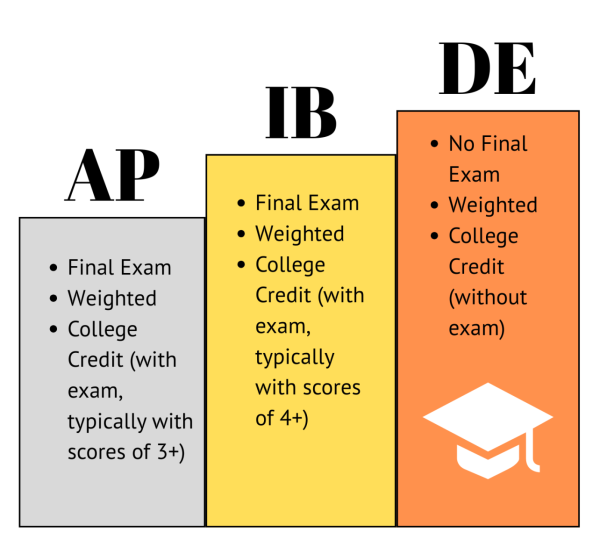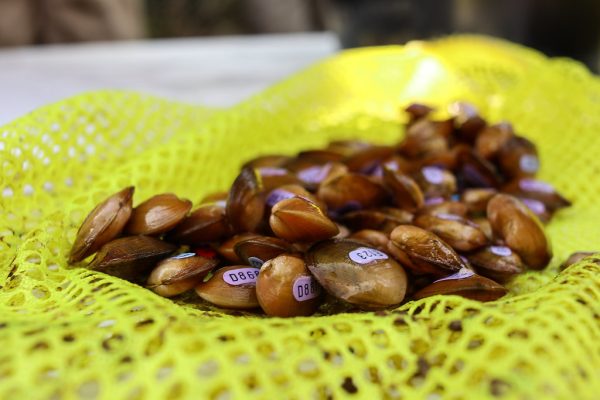California Girls’ State and Boys’ State: ‘substantially similar?’
Granite Bay High School juniors Kate Broers as a Spencer Longoria have been selected as delegates for Girls’ State and Boys’ State respectively. There have been some recent background movements in the program.

Currently, Boys’ State hosts around 1000 delegates. Girls’ State typically has around 540 delegates in attendance each year. With the upcoming move to Sac State, the program may be able to expand because of increased dorm space.
Two of Granite Bay High School’s current juniors are going to California State University, Sacramento (Sac State) this summer—Kate Broers as a delegate to Girls’ State and Spencer Longoria as a delegate to Boys’ State.
Girls’ State and Boys’ State allow rising high school seniors to attend a summer program to learn about leadership, civic engagement and how the government works through an interactive process that allows them to run for government positions within the program. One student from California Girls’ and Boys’ State will get to attend Girls’ and Boys’ Nation.
“I was very surprised, but also… honored and humbled that my educators thought so highly of me,” junior Kate Broers, GBHS’ Girls’ State delegate, said about learning that she was nominated to become a delegate.
GBHS’ ten nominees, five for each program, were selected by teachers from a list of students sorted by their gender in Aeries. The minimum requirements for being on the list are having a 3.5 GPA, and students who are on the list typically are involved on campus.
Once the nominees are selected, the school helps them prepare for final interviews.
The nominees write an essay and create a resume, as well as practice interview questions, before they complete their actual interview by members of the local unit of the organizations that run these programs.
Girls’ State and Boys’ State are run by two different organizations: the American Legion and the American Legion Auxiliary. The programs are alike, and the differences were likened by Kimberly MacKinney, chief counselor for Girls’ State, to different US history classes.
“(The) same content is covered,” MacKinney said. “How the teacher does it is a little bit different.”
However, in Oct. 2021, Senate Bill 363 passed with the intent to ensure that the programs have “substantially similar” qualities in relation to things like “access to government officials and facilities.” Furthermore, the bill encourages the educational offerings of the program to be similar.
“We support the bill, as it passed,” MacKinney said. “Gender shouldn’t dictate what your experience and your opportunity is… in this program.”
Both programs include elected positions for their delegates, have a band and a talent show, and offer scholarships to the delegates.
Among other things, Boys’ State has law enforcement and military demonstrations and will include a service project, which Girls’ State also has. Girls’ State has an event to honor veterans and recently incorporated college and career fairs into their program, which Boys’ State also has.
“In terms of opportunities, both programs in their current structure create a replication of city government structure, county government structure and state government structure.” Tim Aboudara, Boys’ State’s Legislative Administrative Assistant for California, said.
Another goal of the bill is to ensure that students have equal opportunities, regardless of gender. Boys’ and Girls’ State have hosted nonbinary and transgender delegates.
“When we say ‘girls,’ it’s a term that’s carried forward,” MacKinney said. “(It) is used in our discussion right now, not from an exclusionary standpoint.”
Girls’ State is in the process of developing statements to clarify their usage of the term ‘girl.’ They may also develop new terminology for the counselors at Girls’ State, who have historically been referred to as City Moms.
Girls’ State attendants are grouped into cities in which they learn how the government operates on that level, and about the roles of mayor, city council, and more. People are elected and organize what the city does. The counselors do not coordinate what their city does.
“(Girls’ State) is a very hands-on, learning-by-doing situation,” MacKinney said. “So if you’re elected mayor, you’re going to start with the City Council. If you’re the treasurer, you are building a budget. There’s tax collecting. They come up with (how) the city is going to make money, what is the primary industry, those kinds of things.”
Student leaders at the city level then meet at the county level and, until last year, would organize fictitious political parties to explain how California’s primary elections worked. They also elect a Senate and Assembly and debate delegate-created bills to present to the delegate governor.
Currently, Boys’ State hosts around 1000 delegates. Girls’ State typically has around 540 delegates in attendance each year. With the upcoming move to Sac State, the program may be able to expand because of increased dorm space.
“There’s definite pluses (to moving to Sac State),” MacKinney said. “We have access to… more legislators to be involved throughout the program and more officials to be involved throughout the program.”
This bill is one reason for Girls’ State’ move to Sac State this year. Plus, Claremont McKenna College’s dorm availability was not compatible with Girls’ State schedule this year.
Funding also plays a part in determining where Girls’ or Boys’ State is held. Units, which are local extensions of the national American Legion and American Legion Auxiliary organizations, fundraise to provide the opportunity to attend Boys’ or Girls’ State. They may receive donations from local businesses, churches, and organizations.
“(All the funding for Girls’ State) is provided by the Auxiliary and these little 80-year-old women that go out and fundraise and host dinners and… sell baskets, that type of thing,” Tammy Sollazzo, ALA California Girls’ State, said. “So yes, it’s best for us to go where it’s financially feasible.”
The Auxiliary is much smaller as a sponsoring organization, which is a factor to consider when comparing the amount of delegates Girls’ State and Boys’ State sponsor.
However, Girls’ State wants to avoid their program becoming “some elite thing” and they want delegates to “experience an environment that is very supportive and empowering.”
“Learn something out of (Boys’ State). Have a great time. It’s an experience that changes a lifetime,” Aboudara said. “It changed my life when I was a delegate.”

Kate is a senior and Editor of the Opinion section. This is her second year on the Gazette staff.








